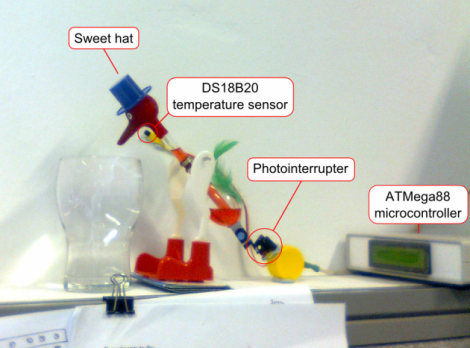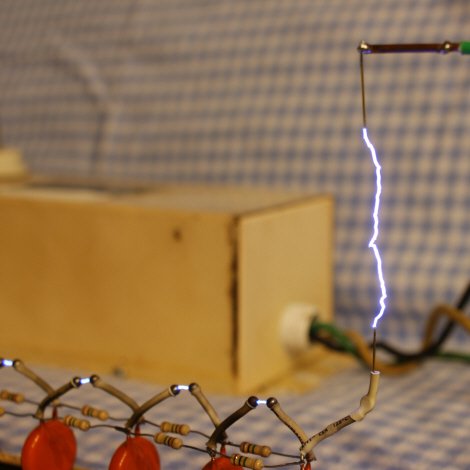
Dippy birds are the toys that teeter-totter back and forth as the beak of bird-shaped body dips into a container of water. The felt covering the beak and head picks up water and, through evaporation, cools that end of the glass tubing. The temperature changes cause the dichloromethane to either boil off, or condense, shifting the weight of the liquid thereby pivoting the glass body.
The real question is, does the temperature of the water cause the toy to move differently, and can that be measured to calculate the temperature of the water? [Craig] put that query to the test, by designing an apparatus to measure the motion of a Dippy Bird. A photointerruptor was used to measure the motion of the body, causing an interrupt each time the tail of the bird passes in between the sensor and the emitter. For control data a DS1820 temperature sensor was positioned near the felt on the head of the bird, and a relative humidity sensor captured readings at the same time. Data from the three inputs was collected over a two-day period. Although not a precise measurement, the motion of the bird did trend in the same ways that were recorded by the temperature and relative humidity sensors.














